The Legend of Yamata-no-Orochi
- Part 1
- Part 2
Having watched all this from his hiding spot, Susano-o then sprang out, drew his sword, and proceeded to cut the Yamata-no-Orochi to pieces. Soon the Hii River ran red with its blood.
As he was cutting one of the serpent’s tails, Suasano-o’s sword stuck something hard, and the blade broke. Peering in to the cut, he found a sharp sword lodged inside. He pulled the great blade out of the serpent’s tail, and realizing that it was no ordinary sword, he offered it up to his elder sister Amaterasu, the sun deity and ruler of Takamagahara. This sword was called Kusanagi-no-tsurugi (The Great Sword Kusanagi), and became one of the three great Imperial Treasures of Japan.
With the Yamata-no-Orochi now slain and Kushinada-hime safe, Susano-o searched the land of Izumo for a suitable place to build a palace to live in. Upon arriving in Suga, Susano-o said, “My heart feels so refreshed here. This is the place I have been searching for!” And that is where he built his palace. When he finished, a large cloud appeared, and looking up at the sky, Susano-o said this poem aloud:
Yakumo-tatsu
Izumo Yaegaki
Tsuma-gomi ni
Yaegaki tsukuru
Sono Yaegaki o
Which means:
Izumo is a land protected by clouds aplenty
And like this land of Izumo
I shall build a fence to protect the palace
Where my wife will live
Like the clouds in this land of Izumo
Susano-o then appointed his father-in-law Ashinazuchi to be the caretaker of their palace, and Susano-o and Kushinada-hime lived together in the Palace at Suga.
It is said that the poem Susano-o recited is the origin of Japanese poetry such as waka and haiku.
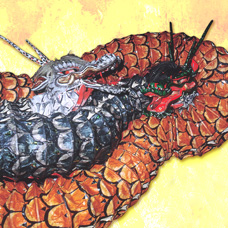
“Yamata-no-Orochi” is one of the most famous Kagura performances in the present day.
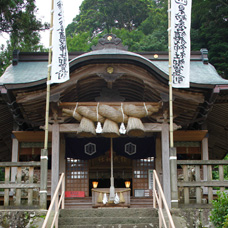
Suga Shrine stands on the site where Susano-o first recited his poem and built his palace for Kushinada-hime.
Visiting Locations featured in the Legend of Yamata-no-Orochi
First, and most importantly, this legend is said to refer to the Hii River itself, and the attempts to control the recurrent flooding that did great damage to the surrounding areas. Another version of this legend found in the Nihon Shoki refers to Kushinada-hime as Kushi-inada-hime, a name that uses the characters for “rice field”, and Susano-o saving her from the Yamata-no-Orochi can be seen as a metaphor for attempts to protect rice fields from flooding. Most of the areas connected with this legend can be found along the Hii River.
The area where Susano-o met Kushinada-hime is called Torikami, an area near the headwaters of the Hii River in Oku Izumo Town in southern Shimane. Orochi Shrine, a small shrine that is part of Iwatsubo Shrine in Oku Izumo, enshrines a piece of the Yamata-no-Orochi’s tail. Ama-ga-fuchi, a deep pool where the waters of the Hii River slow, which is said to have been the place where Yamata-no-Orochi lived, is in the Kisuki area of Un-nan City. Also found in Un-nan are the Happon-sugi, eight cedar trees on the grounds of Hii Shrine which mark the spot where Susano-o buried the eight heads of the Yamata-no-Orochi, and Tsubogami, a pit on the grounds of Yaguchi Shrine which is said to be where one of the eight vats for the sake is located. An interesting legend connected to Tsubogami says that whenever anyone touched the stone, lightning would flash across the skies and the earth would rumble. People decided to cover the pit with stones and place a fence around it to keep people from angering the gods.
Two local shrines also figure prominently in this legend. Yaegaki Shrine in Matsue is the place where Kushinada-hime hid from the Yamata-no-Orochi, and there is a pond on the grounds called Kagami-no-ike (Mirror Pond) that is said to have used as both drinking water and as a mirror. Suga Shrine, in the Daito area of Un-nan, is the location of the palace at Suga where Susano-o and Kushinada-hime lived after he slew the Yamata-no-Orochi. The name “Suga” itself comes from the phrase “sugasugashii” (“refreshing”), which is how Susano-o said he felt when he arrived there.
The Yamata-no-Orochi legend is probably the most well-known myth set in Shimane, and many more places that have a connection to this legend can be found throughout eastern Shimane.
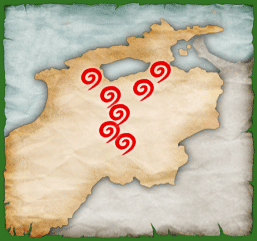
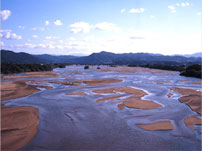
Hii River
The river begins at Mt. Sentsuzan in Oku Izumo-cho, Nita-gun,
and flows through Unnan City and Izumo City into Lake Shinji.
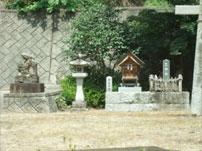
Orochi Shrine
1960 Hirata, Kisuki-cho, Unnan City, Shimane
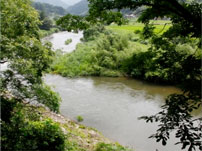
Ama-ga-fuchi
Yumura, Kisuki-cho, Unnan City, Shimane
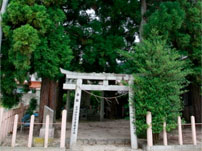
Happon-sugi
Satogata, Kisuki-cho, Unnan City, Shimane
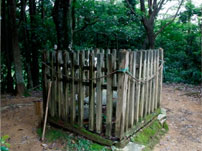
Tsubogami
1524-1 Nishi Hi Nobori, Kisuki-cho, Unnan City, Shimane
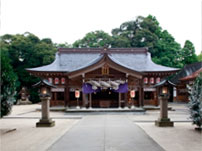
Yaegaki Shrine
227 Sakusa-cho, Matsue City, Shimane
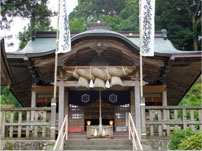
Suga Shrine
260 Suga Daito-cho, Unnan City, Shimane













